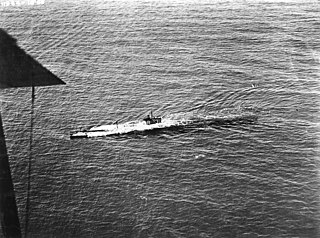
USS Langley (CV-1/AV-3) was the United States Navy's first aircraft carrier, converted in 1920 from the collier USS Jupiter, and also the US Navy's first turbo-electric-powered ship. Conversion of another collier was planned but canceled when the Washington Naval Treaty required the cancellation of the partially built Lexington-class battlecruisers Lexington and Saratoga, freeing up their hulls for conversion to the aircraft carriers Lexington and Saratoga. Langley was named after Samuel Langley, an American aviation pioneer. Following another conversion to a seaplane tender, Langley fought in World War II. On 27 February 1942, while ferrying a cargo of USAAF P-40s to Java, she was attacked by nine twin-engine Japanese bombers of the Japanese 21st and 23rd naval air flotillas and so badly damaged that she had to be scuttled by her escorts. She was also the only carrier of her class.

The first USS Minneapolis (C-13/CA-17) was a United States Navy Columbia-class protected cruiser. She was named for the city of Minneapolis, Minnesota.

The first USS Abarenda (AC-13/AG-14) was a collier in the service of the United States Navy during World War I.

USS Marion was a sloop-of-war of the third rate in the Union Navy during the American Civil War launched at the Boston Navy Yard on 24 April 1839. On 10 November 1839, she departed Boston on her first cruise, to Brazil. Sunk when heaved down in the harbor at Rio de Janeiro early in 1842, she was raised and sailed back to Boston, arriving in May. She then set sail for the Caribbean, returning in May 1843. For the next few years, she remained in ordinary at Boston and then cruised off the West Coast of Africa and in the Mediterranean until 1848. She captured the Casket, a slaver, near Cabinda on 2 August 1846. After a tour in the East Indies from 1850–52, she resumed operations with the African Squadron from 1853–55 and 1858-60, capturing three more slaving ships: Brothers off Mayumba on 8 September 1858 and Orion and Ardennes in late April 1859 off the coast of Kongo. 1856-57 was spent in ordinary at Norfolk.

USS R-3 (SS-80) was an R-class coastal and harbor defense submarine of the United States Navy.

USS Dahlgren (DD-187/AG-91) was a Clemson-class destroyer which served in the United States Navy during World War II. Entering service in 1920, the ship had a brief active life before being placed in reserve in 1922. Reactivated in 1932, Dahlgren remained in service mainly as a test ship until 1945. She was sold for scrapping in 1946. She was named for Rear Admiral John A. Dahlgren (1809–1870), and was the second ship of three which served in the US Navy to receive the name.

USS Goldsborough (DD-188/AVP-18/AVD-5/APD-32) was a Clemson-class destroyer in the United States Navy during World War II. She was the second Navy ship named for Rear Admiral Louis M. Goldsborough (1805–1877). Entering service in 1920, the ship had a brief active life before being placed in reserve in 1922. Goldsborough was reactivated for World War II and was used as an aircraft tender, destroyer and high speed transport in both Atlantic and Pacific theaters. Following the war, the ship was sold for scrapping in 1946.

The second USS Maumee (AO-2) was laid down as Fuel Ship No. 14 on 23 July 1914 by Navy Shipyard, Mare Island, Calif.; launched 17 April 1915; sponsored by Miss Janet Crose; and commissioned 20 October 1916. When the Navy's ship classifications were introduced 17 July 1920, Maumee was designated AO-2.

USS Ajax (AC-14/AG-15) was a collier in the United States Navy. Originally she retained her previous name of Scindia, and was renamed for the mythical Ajax in 1901. In 1921, she became a receiving ship and was redesignated AC-14. She was reclassified as a seaplane tender and given the hull designator AG-15 in 1924.

USS Leonidas (AD-7) was a destroyer tender, the lone ship in her class, named for Leonidas I, and the second United States naval vessel to bear the name.

USS Grebe (AM-43) was a Lapwing-class minesweeper in the United States Navy.

USS Vulcan was a collier of the United States Navy.

The third USS Neptune (AC–8), a collier of the U.S. Navy, was laid down by the Maryland Steel Co., Sparrows Point, Md. 23 March 1910; launched 21 January 1911; and placed in service with a merchant crew at Norfolk Navy Yard 20 September 1911.

USS Topeka (PG-35) was a gunboat of the United States Navy.

USS Seneca (AT-91) was a Navajo-class fleet tug constructed for the United States Navy during World War II. Her purpose was to aid ships, usually by towing, on the high seas or in combat or post-combat areas, plus "other duties as assigned." She served in the Atlantic Ocean performing various tasks.

USS Glacier (AF-4) was a Glacier-class stores ship acquired by the U.S. Navy for use in the Spanish–American War. She served again during World War I in the dangerous North Atlantic Ocean, delivering general goods and ammunition to American Expeditionary Force troops in Europe.

USS Rockwall (APA-230) was a Haskell-class attack transport that served in the United States Navy from 1945 to 1947 and from 1951 to 1955. She was scrapped in 1984.

USS Loeser was a Buckley-class destroyer escort of the United States Navy, named in honor of Lieutenant Commander Arthur E. Loeser (1903–1942).

USS Lebanon (AG-2) was a 3,285-long-ton (3,338-metric-ton) collier, which the United States Navy acquired in 1898 from the Philadelphia and Reading RR. Company to provide coal for Navy warships during the Spanish–American War. When the need for her coal was no longer a necessity, Lebanon was assigned various duty such as transporting stores as well as target repair and towing operations.

USS Nero (AC–17), a steel steam collier, was launched in 1894 as the steamer Whitgift by J.L. Thompson and Sons, Sunderland, England. The vessel was purchased on 30 June 1898 from McCondray and Co. at San Francisco and commissioned on 8 June 1898.




















